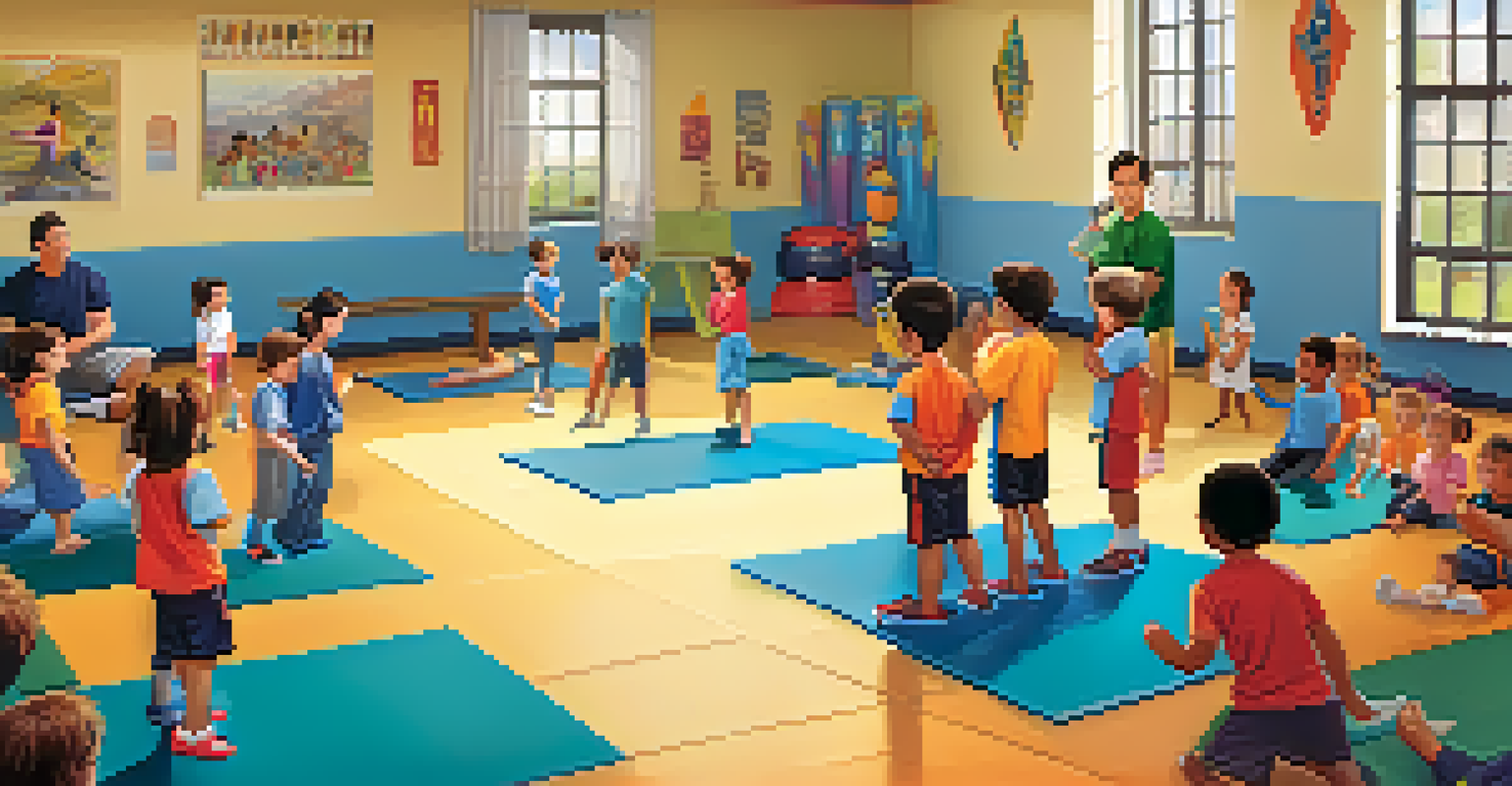Top Self Defense Moves Parents Can Teach at Home

Why Self Defense Skills Are Important for Children
Teaching self-defense is more than just physical skills; it's about instilling confidence in children. When kids know they can protect themselves, they're less likely to be targets for bullies or potential threats. This knowledge can significantly boost their self-esteem and help them feel more secure in their environment.
The best way to predict the future is to create it.
Moreover, self-defense training can teach children about boundaries and respect, both for themselves and others. Understanding the importance of personal space can discourage unwanted interactions and empower them to speak up when they feel uncomfortable. These lessons can be invaluable as they navigate social situations both in and out of school.
Finally, self-defense education can foster critical thinking and quick decision-making skills. In a threatening situation, the ability to assess risks and react appropriately can make all the difference. By practicing various scenarios at home, parents can help their children develop these essential life skills.
Establishing a Safe Learning Environment at Home
Creating a safe and comfortable space for practicing self-defense is crucial. Choose an area in your home with enough room to move around freely without the risk of injury. A living room or a backyard can work well; just make sure there are no sharp objects or furniture that could pose a hazard during practice.

It's also important to set clear rules around practice sessions. Discuss what is acceptable behavior and the importance of respect during training. Encourage open communication, allowing children to express their feelings about what they learn and any concerns they may have.
Confidence Through Self-Defense
Teaching self-defense empowers children with confidence, helping them feel secure and less vulnerable to bullying.
Lastly, make it fun! Incorporating games or playful challenges can keep kids engaged while they learn. A positive atmosphere not only makes the experience enjoyable but also reinforces the lessons in a memorable way.
Basic Stance: The Foundation of Self Defense
One of the first self-defense moves parents can teach is the basic fighting stance. This stance provides balance and readiness, making it easier for children to react quickly. To practice, have your child stand with feet shoulder-width apart, knees slightly bent, and hands up near their face, ready to protect themselves.
Self-defense is not only a right; it is an obligation.
Explain the importance of maintaining a strong stance. A solid base helps them remain stable even when encountering an unexpected push or pull. Encourage them to practice transitioning in and out of this stance, which will help build muscle memory over time.
Lastly, remind your child that the goal of self-defense is not to fight but to escape danger. Reinforcing this mindset can help them approach self-defense with a sense of responsibility rather than aggression.
Simple Blocks Against Attacks
Teaching children how to block incoming attacks is a vital skill in self-defense. Simple movements, like using the forearms to shield the face or body, can help them avoid injury. Practice these blocks together, emphasizing the importance of staying calm and focused during an attack.
To make this exercise engaging, you can simulate different attack scenarios using soft objects like pillows. This not only makes practice fun but also allows kids to understand the timing and distance needed for effective blocking. The goal is to help them react instinctively when they face a real situation.
Safe Practice Environment
Establishing a safe and fun space for self-defense practice encourages children to learn and communicate openly about their experiences.
As they gain confidence, encourage them to practice with increasing intensity. This will prepare them for unexpected encounters while reinforcing the importance of self-control and awareness.
Effective Escapes from Grabs and Holds
One of the most crucial skills in self-defense is learning how to escape from grabs or holds. Teach your child to remain calm and assess the situation if someone grabs their wrist or arm. Demonstrating how to twist and pull away can help them break free from an attacker’s grip.
For example, you can practice the 'wrist escape' technique. When someone holds their wrist, they should rotate their wrist towards their thumb and pull away sharply. Practicing this motion repeatedly helps build muscle memory and increases their chances of successfully escaping.
Remind your child that the key to escaping is to act quickly and decisively. The more they practice, the more confident they'll become in their ability to handle real-life situations.
Targeting Vulnerable Areas for Self Defense
Identifying vulnerable areas on an attacker can be a game-changer in a self-defense situation. Teach your child about areas like the eyes, nose, throat, and knees that, when targeted, can effectively disable an attacker temporarily. Understanding this concept can help them feel empowered when faced with a threat.
For instance, practice techniques like a quick jab to the nose or a knee strike to the groin. These moves require minimal strength but can create enough distraction for your child to escape. Make sure to emphasize the importance of using these techniques only when absolutely necessary.
Regular Practice for Mastery
Consistent practice of self-defense techniques is crucial for building muscle memory and ensuring children are prepared for real-life situations.
It's crucial to instill an understanding of responsibility in your child when discussing targeting vulnerable areas. Self-defense is about protection, not retaliation, and should always be approached with caution.
Using Your Voice: Verbal Self Defense
While physical techniques are important, never underestimate the power of a strong voice. Teaching children how to assertively communicate can often deter potential threats. Encourage them to practice using a loud, confident voice to say 'no' or 'help' in a threatening situation.
Role-playing different scenarios can help reinforce the importance of verbal self-defense. You can take turns playing the role of a stranger and responding to your child’s assertive commands. This practice not only boosts their confidence but also helps them understand how to use their voice effectively.

Remind your child that they have the right to speak up and that their voice can be a powerful tool for self-protection. Encouraging this mindset can help them feel more secure in any situation.
Practicing Self Defense Regularly for Retention
Like any skill, regular practice is essential for retaining self-defense techniques. Schedule consistent practice sessions at home to reinforce what your child has learned. This ongoing training helps build muscle memory and ensures they remain prepared for any situation.
To keep things fresh and engaging, vary the drills and incorporate new techniques over time. This not only prevents boredom but also allows your child to expand their skill set. Consider turning practice into a family activity, where everyone can participate and learn together.
Lastly, celebrate their progress! Acknowledging their hard work and improvements can motivate them to continue honing their self-defense skills. With each practice session, they’ll grow more confident and capable.